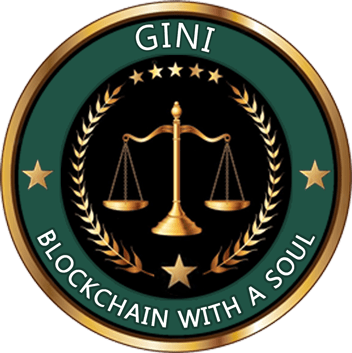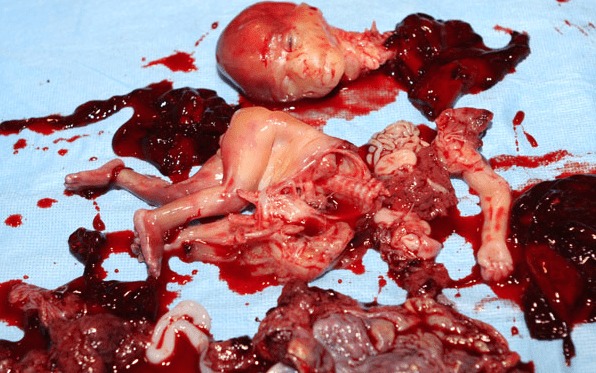Preface.To avoid any confusion, I want to emphasize up-front that all the functions of the Federal Reserve (and any central bank) are entirely unnecessary in an economy based on a well-designed cryptocurrency, which automatically provides the relatively useful technical functions that central banks provide. Additionally, all the toxic elements of central banking that plague our world today are also eliminated with a well-designed cryptocurrency because self-serving politicians can’t collude with gigantic private banks to manipulate a crypto money supply and crypto banking system. So, everything in this article is specifically focused on explaining how central banks work in a fiat banking system.
A Rational Discussion About the Federal Reserve System. Any rational discussion about the U.S. Federal Reserve should begin by acknowledging that the Federal Reserve is not a monolithic “bank” in the sense that many people think. It’s a system of 12 relatively autonomous Regional Reserve Banks that perform various technical functions throughout the U.S. banking system, including check clearing, electronic funds transfers, distributing and receiving currency and coins, wholesale emergency lending to commercial banks, regulatory oversight, among other technical activities. For the federal government, the Regional Reserve Banks act as fiscal agents, paying U.S. Treasury checks; processing electronic payments; and issuing, transferring, and redeeming U.S. Government securities. All of these functions are reasonable and necessary in any modern banking system.
The Fed is Influenced by Partisan Ideology. Like the U.S. Congress, the Federal Reserve System is a political organization and the humans within the system don’t always agree on how it should work. The ideological conflicts within the Federal Reserve System originate from its internal management structure, which is actually quite interesting. Here is a detailed diagram of the structure of the Federal Reserve System:

Now let’s develop a deeper understanding of the basic structure and operations of the Federal Reserve System.
Board of Governors. The President of the United States appoints the Board of Governors, which is the group of seven individuals who have the most power at the Federal Reserve (the “Fed”), including the Chairman of the Federal Reserve. Although the U.S. Senate must confirm the President’s appointees, these seven people primarily follow the politically-driven economic and social agenda of the President after they’re confirmed. This is because they’re specifically selected because their ideological world view is aligned with the world view of the White House at the time of their appointment.
Regional Reserve Banks. Each of the 12 regional Federal Reserve Banks is governed by a board of directors, which are elected by all the thousands of member banks throughout the nationwide Federal Reserve System. The board of directors at each regional reserve bank then appoints their own president. The member banks, their boards of directors, and the presidents they appoint to lead their respective regional reserve banks generally reflect the authentic cultural and ideological values of their geographically diverse constituencies, which can be substantially different from the values of the overlords in Washington.
Limited Private Ownership, Public Administration. Many people make a big issue of the fact that the Fed has a private ownership component. This ownership is only symbolically private and the Fed’s ownership and income distribution process is reasonably transparent. The private ownership component is derived simply from the Federal Reserve Act requirement for all the thousands of commercial member banks to own shares in the regional Federal Reserve Bank that governs their commercial banking activities. However, the commercial member banks are restricted from exercising any meaningful proprietary control over their respective regional Reserve Bank and their profits are limited to the 6% statutory dividend, as explicitly provided in the Federal Reserve Act.
Why is the Fed so Vulnerable to Political Bias? As indicated above, the actual control of the Federal Reserve System is concentrated in the Board of Governors, which is appointed by the President of the United States and confirmed by the Senate. This exposes the Federal Reserve System to significant ideological and political bias. (In fact, there is no branch of the U.S. Government with more inherent political bias than the Executive Branch.) However, the concept of “ownership control” that most people have in mind does not actually apply to the Federal Reserve System because the influence of the commercial member banks is limited only to an advisory role in the Federal Open Market Committee, which we will discuss next.
Federal Open Market Committee (“FOMC”). This is where all the political theater takes place. The FOMC is comprised of the seven members of the Board of Governors (“BOG”) and only five of the 12 Reserve Bank presidents. As you can instantly see, the politically-driven seven-member BOG always has a numerical advantage in all FOMC monetary policy decision votes. Moreover, the Federal Reserve Bank of New York president has a permanent seat on the FOMC, and only two FOMC members may dissent on any given vote, which technically and mathematically eliminates any possibility to overrule the BOG. (Yes, I have an urge to call it the “BORG,” too.) This means the entire Federal Reserve System is basically 100% controlled by the political agenda of the White House, not Congress.
The Fed’s Politicized Structure Already Explains Its Malfunctions; No Need for Conspiracy Theories. At this point, we should be able to avoid wasting time on irrational conspiracy theories and various emotional debates.1 Certainly, the Federal Reserve should have a much more transparent auditing process for many good reasons, which would put to rest many legitimate questions about the integrity of its operations. And the statutory 6% dividend should not be fixed; rather, it should be pegged to an unmolested natural market-based interest rate pricing mechanism to reduce the Federal Reserve System’s inherent bias toward low interest rates. (This creates an incentive for the Fed to keep rates artificially below the 6% rate for as long as possible, but there are much stronger fiscal incentives to keep interest rates artificially low, which is the topic of a future article.) Nevertheless, most of the other conspiracy theories about the Federal Reserve are merely distractions from two fundamental questions that are easy to answer:
Does Money Supply Manipulation Hurt an Economy? As we have learned previously in the “What Caused the Great Depression?” series, the answer to this question is clearly, “yes.” That means the Federal Reserve should not be allowed to manipulate the U.S. money supply based on the politically-driven agendas of career-minded politicians whose decision making processes are always distorted by the ever-looming interests of their private benefactors.
Does the Federal Reserve System Provide Any Useful Benefits to the U.S. Banking System? As we learned above, yes, it does provide some useful technical benefits to the banking system, which should be appreciated. However, that doesn’t mean U.S. citizens should tolerate all the toxic economic affects that the Fed’s White House-controlled monetary policy inflicts upon the U.S. and global economies.
A Fair and Realistic Understanding of the Fed. Now the dysfunction that most Americans hate about the Federal Reserve should begin to make more sense. However, I hope we can agree on two basic points: (1) The Federal Reserve System provides several important technical services to the U.S. banking system that may be difficult for private corporations to reliably and fairly provide; and (2) there are some thoughtful and reasonable humans working in the 12 Regional Reserve Banks whose minds are not necessarily colonized by the political aliens in Washington.
Notes:
1. Nevertheless, the detailed history of the Federal Reserve is quite interesting. One of the most intriguing and entertaining books on the subject is G. Edward Griffin’s book, The Creature from Jekyll Island, which I recommend to develop a deeper understanding of the conflicts of interest that have plagued the Federal Reserve for over 100 years.
About Ferris Eanfar
Ferris Eanfar has over 20 years of experience in technical, financial, media, and government intelligence environments. He has written dozens of articles and several books in the fields of Economics, Crypto-Economics, and International Political Economy, including Broken Capitalism: This Is How We Fix It and GINI: Capitalism, Cryptocurrencies & the Battle for Human Rights and the Global Governance Scorecard. Ferris is a cofounder of the Gini Foundation, which builds unique cryptocurrency systems to protect human rights, among other benefits; and the CEO of the AngelPay Foundation, a nonprofit financial services company with a mission to “return wealth and power to the creators of value.” To learn more about Ferris, please visit the About Ferris page.Visit Ferris on:

 Gini Website Coming Soon. We (
Gini Website Coming Soon. We (
